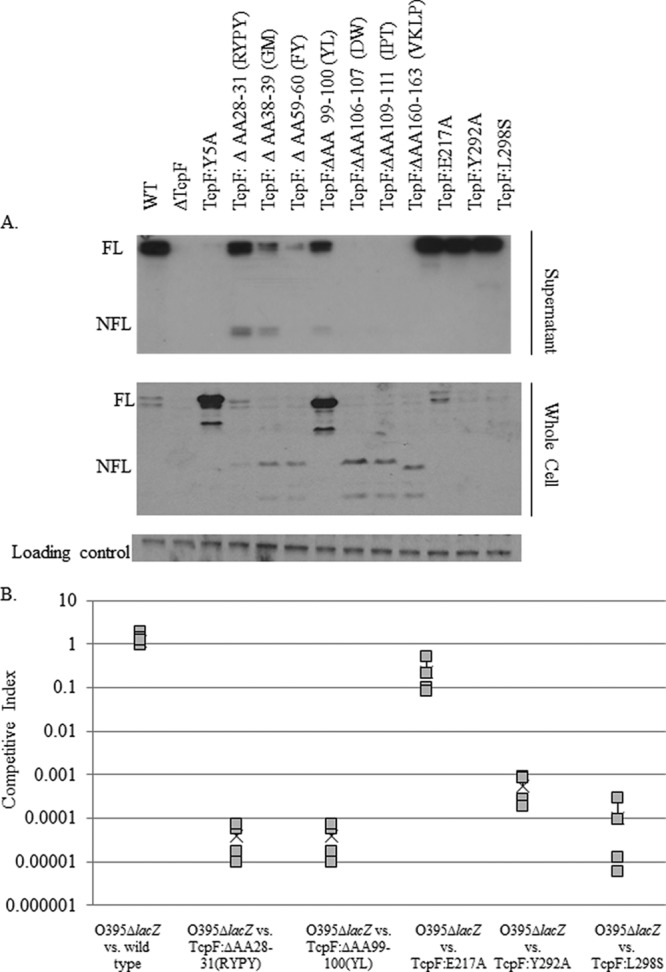Fig 3.

Mutations in additional regions of tcpF predicted to encode secretion determinants by linker scanning mutagenesis and alignment with environmental homologues result in TcpF derivatives secreted into culture supernatant. (A) Immunoblot of supernatant from strains with TcpF derivatives predicted to be defective in secretion. Twenty microliters of culture supernatant or 16 μg of whole cells was run on SDS-PAGE. Immunoblotting with anti-TcpF was performed. The loading control is a cross-reactive band. “FL” indicates full-length TcpF at 36 kDa. “NFL” indicates a 19-kDa product which is likely a major degradation product of TcpF (36). A 5×-longer exposure of the region of NFL TcpF is shown in Fig. S2 in the supplemental material. (B) Competitive indices of TcpF:ΔAA28-31, TcpF:ΔAA99-100, TcpF:E217A, TcpF:Y292A, and TcpF:L298S strains. Strains were coinoculated with a ΔlacZ reference strain into four mice. Blue and white colonies were counted, and data are reported with respect to the reference strain. TcpF:ΔAA28-31, TcpF:ΔAA99-100 TcpF: Y292A, and TcpF:L298S strains are defective in colonization similarly to a ΔtcpF strain at a 4- to 5-log defect.
